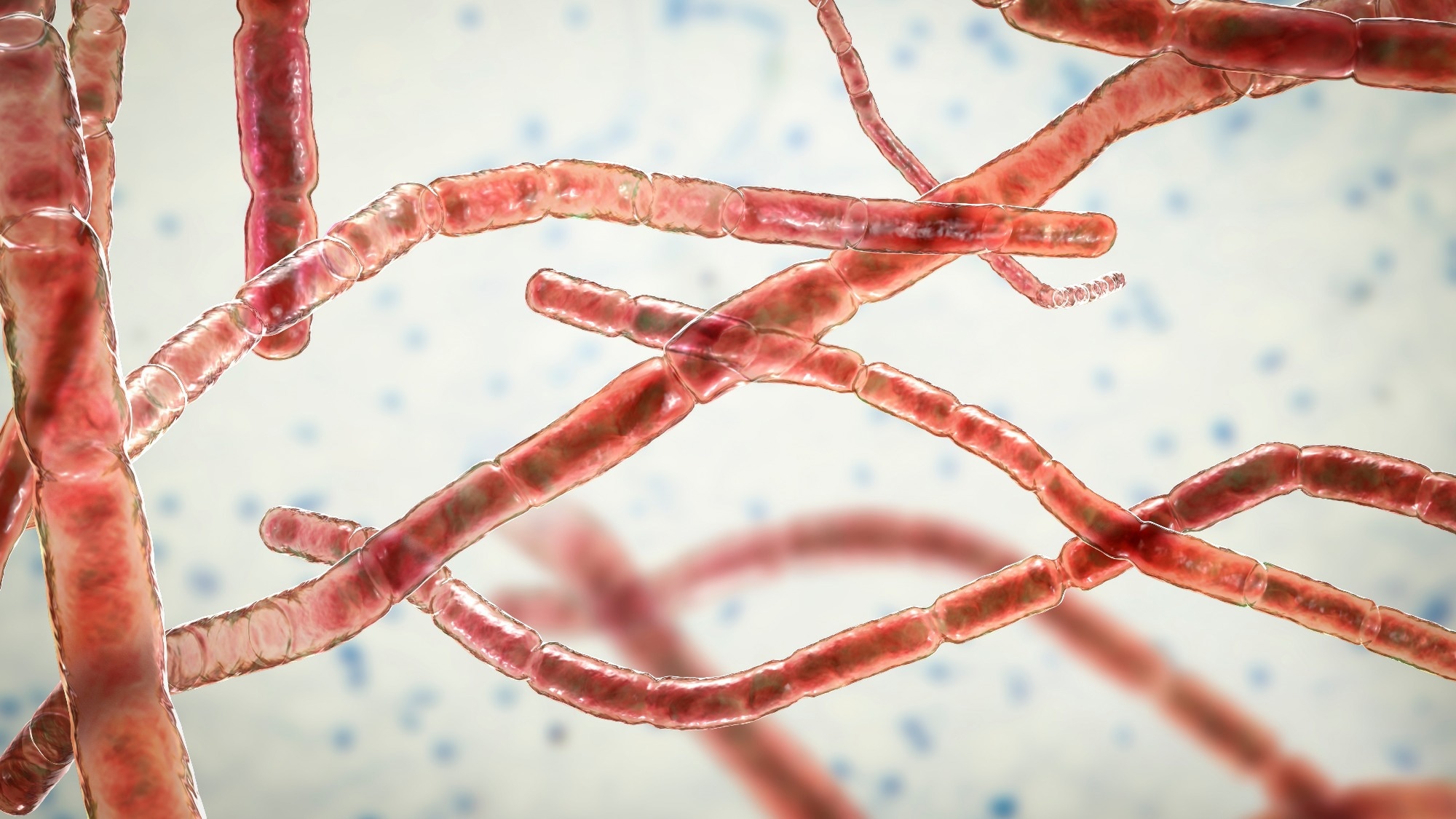In a recent case report published in the U.S. Centers for Disease Control and Prevention’s (CDC) journal Emerging Infectious Diseases, researchers reported a case of severe acute respiratory syndrome coronavirus 2 (SARS-CoV-2) and Nocardia pseudobrasiliensis concomitant infection.
 Case report: Nocardia pseudobrasiliensis Co-infection in SARS-CoV-2 Patients. Image Credit: Kateryna Kon / Shutterstock
Case report: Nocardia pseudobrasiliensis Co-infection in SARS-CoV-2 Patients. Image Credit: Kateryna Kon / Shutterstock
Background
Nocardia species are Gram stain-positive and slightly acid-fast-staining aerobic-type actinomycetes species that may cause disseminated disease among immunosuppressed individuals. Nocardiosis must be included in the differential diagnoses of pneumonia among immunocompromised individuals, irrespective of other concomitant infections.
Carbapenem/sulfonamide combination treatment is used for empirical treatment of Nocardia infections, and identifying the causative species is essential to choose the most optimum therapeutic strategy. Co-infections with other pathogenic organisms during or following coronavirus disease 2019 (COVID-19) are not common, and particularly, Nocardia and SARS-CoV-2 co-infections have been documented rarely.
About the case report
In the present case report, researchers presented an immunosuppressed male COVID-19 patient, aged 52 years, diagnosed with Nocardia pseudobrasiliensis-caused pneumonia in the United States of America (USA).
In July of 2022, the male patient visited the Virginia Commonwealth university healthcare system’s emergency department due to breathing difficulties following the SARS-CoV-2-positive result of a home-based test. He developed symptoms 10.0 days prior to being hospitalized in a hypoxic state resulting from COVID-19-associated pneumonia. The symptoms did not include sore throat, chills, fever, diarrhea, or abdominal pain.
The patient was taking empagliflozin for diabetes mellitus type 2 and had a previous history of bronchiectasis, and systemic sarcoidosis, including advanced-stage pulmonary sarcoidosis and cardiac sarcoidosis, managed by orally administered hydroxychloroquine (200.0 mg twice daily), intravenously (IV) administered infliximab (at dose 800.0 mg eight weeks apart) and implanted cardioverter defibrillator. He had quit smoking for 30 years and worked in the apartment maintenance department.
At hospitalization, respiratory distress and wheezing were documented, with chest radiography findings associated with sarcoidosis without any acute cardiopulmonary illness. IV remdesivir (200.0 mg daily) and dexamethasone (six mg daily) were initiated; however, hypoxia worsened, and the following day, he was administered 5.0 L per minute oxygen via face mask. Subsequently, the doctors discontinued remdesivir due to the gastrointestinal tract (GIT)-associated adverse effects. SARS-CoV-2-positive polymerase chain reaction (PCR) report, elevated leukocyte counts of 10 × 109 leukocytes/L, and C-reactive protein levels of 15 mg per dL were obtained.
Three days later, contrast-enhanced computed tomography findings of bilateral progressive consolidation, most prominent at the base of the lungs, without ground glass-type appearance, were observed. Sputum cultures were obtained, and the patient was administered IV tazobactam/piperacillin (3.40 grams six hourly). After a week of hospitalization, sputum culture reports indicated gram-positive, beaded rod presence, suggestive of Nocardia. The patient was shifted to imipenem (500.0 mg six hourly) and IV sulfamethoxazole/trimethoprim (SMX/TMP) (five mg/kg eight hourly). In spite of dual therapy, hypoxia was persistent, and on day 12.0 of hospitalization, progressive consolidatory nodular opacities were observed in the basal region of the left lobe of the lungs. On no response to therapy, the doctors incorporated orally administered linezolid (600.0 mg 12 hourly) into the antibiotic region, following which hypoxia resolved.
Four days later, matrix-assisted laser desorption/ionization time-of-flight (MALDI-TOF) mass spectrometry findings confirmed Nocardia pseudobrasiliensis infection, and chalky-white colonies, having an orange-colored pigmentation, of the microbe were observed. Susceptibility testing indicated imipenem resistance. The patient received hospital discharge following 20 days of hospitalization, with a prescription of ciprofloxacin (500.0 mg twice daily) and linezolid (600 mg twice daily), for >6.0 weeks. Pre-discharge brain magnetic resonance imaging (MRI) scans showed no ring enhancement or central nervous system (CNS) involvement.
Two weeks post-discharge, lowered respiratory discomfort was observed, with only intermittent oxygen supplementation required, following exertion, and four weeks post-discharge, imaging showed pulmonary nodular improvement. Symptomatic improvement continued up to a month post-discharge. The patient temporarily discontinued therapy due to economic constraints and was transitioned to SMX/TMP (two tablets of SMX 800.0 mg and TMP 160.0 mg eight hourly) with orally administered ciprofloxacin (500.0 mg twice daily). Dual antibiotic therapy was continued since the patient was under glucocorticoid treatment for sarcoidosis. Four months-post discharge from the hospital, the male experienced dyspnea only after considerable exertion. He was to be shifted to SMX or TMP monotherapy following significant improvement in the lung nodules.
At present, 10 Nocardia infections have been reported during or after SARS-CoV-2 infection. The majority of patients developed nocardiosis five to 50.0 days post-SARS-CoV-2 diagnosis, and the mean time to identification of co-infection was 17.0 days. Pulmonary-type nocardiosis was most commonly observed, most infections were caused by Nocardia farcinica, and all the affected individuals received glucocorticoid treatment during hospitalization. Linezolid, clarithromycin, and ciprofloxacin are usually effective in managing Nocardia pseudobrasiliensis infections. Overall, the risk of concomitant infections with SARS-CoV-2 is low; however, concerning SARS-CoV-2-positive patients with invasive mechanical ventilation requirements, the co-infection incidence rates are greater.
Based on the case report, Nocardia and SARS-CoV-2 co-infections may occur, particularly among immunosuppressed individuals with comorbidities and glucocorticoid use history. The delayed improvement in clinical signs and symptoms after linezolid administration underscores the importance of prompt identification of Nocardia and its antibiotic susceptibilities.